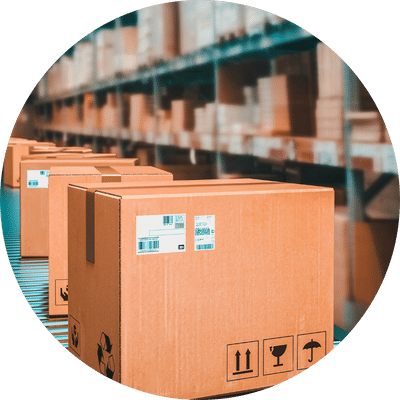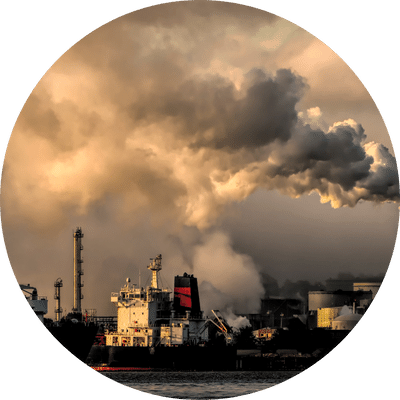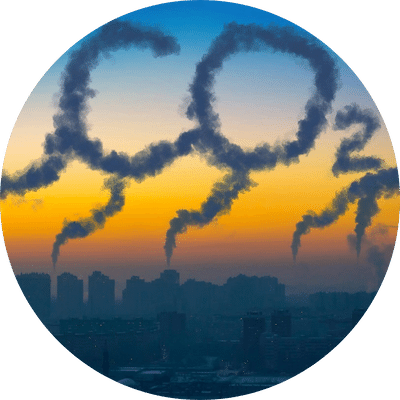Recycling symbols explained
Recycling can already be confusing enough. That’s why we’re here to explain what those small numbers in recycling symbols actually mean.
Netherlands recycles, but not enough and certainly not always correctly. We hope this improves in the future, but the reality is that the amount of plastic actually recycled at the moment is still less than 50% of what is produced.
By the way, we are doing significantly better than the EU as a whole with 14% and the planet as a whole with only 5%.
This means that you might feel like you’re doing good for the planet when you dutifully throw everything in the plastic waste… but that plastic doesn’t always end up in the right place. Unfortunately, part of the problem is a lack of knowledge about recycling symbols.

Symbol 1: PET or PETE
Symbol 1: PET or PETE
PET or PETE (polyethene terephthalate) is the most commonly used plastic for single-use bottled beverages because it is cheap, lightweight, and easy to recycle. It poses a low risk of leaching breakdown products. Recycling rates remain relatively low (about 20%), even though there is high demand for the material from manufacturers.
Used for: Drink and water bottles, food bottles for items like oil, mouthwash bottles, salad dressing packets, etc.
How to recycle PET plastic:
PET or PETE can be recycled if it doesn’t contain food residues, so make sure to rinse it clean. It’s better to throw the caps in the rubbish as they are usually made of a different type of plastic. There’s no need to remove the bottle labels; they handle that in the recycling process.
PET/PETE plastic can be recycled into fleece fabric, fibres, carry bags, furniture, carpet, panelling, belts, bottles, and food containers.

Symbol 2: HDPE – High-Density Polyethylene
Like PET, HDPE is another widely recycled plastic globally. It is a durable, hard plastic that is resistant to most solvents. Therefore, it is often used for cleaning or personal care products. Because it is usually not used for food (except milk bottles), it has a high market value and can be recycled more frequently than many other types of plastic.
How to recycle HDPE plastic:
A 2018 study found that uncontaminated HDPE can be recycled up to 10 times. Therefore, it is always important to rinse the material and follow the instructions on the packaging. Some municipalities may accept the cap/lid, while others require them to be removed. This depends on their recycling process – contact your municipality or check their website.
HDPE plastic can be recycled into: laundry detergent bottles, oil bottles, pens, recycling bins, floor tiles, drainage pipes, benches, dog houses, picnic tables, fences, shampoo bottles, and much more!

Symbol 3: PVC
PVC (polyvinyl chloride) is strong and weather-resistant, so it is often used for things like pipes and siding. PVC is also cheap, so it is found in many products and packaging. Because chlorine is part of PVC, very dangerous dioxins can be released during production. Therefore, never burn PVC, as it releases toxins.
Used for: Blister packaging, wire coatings, siding, windows, pipes
How to recycle PVC plastic:
PVC is rarely recyclable, but it is accepted by some plastic companies. If you need to dispose of PVC, consult your local recycling center to see if you can throw it in the trash or if you need to take it to a collection point.
PVC plastic can be recycled into: decks, paneling, mud flaps, roadway gutters, flooring, cables, speed bumps, and mats.

Symbol 4: LDPE (film)
LDPE (low-density polyethylene) is a flexible plastic with many applications. It used to not be accepted for recycling, but more and more municipalities are starting to accept it.
Used for: Squeeze bottles; bread, frozen food, dry cleaning, and shopping bags; carry bags, etc.
How to recycle LDPE plastic:
This type of plastic can be recycled well, provided it is not mixed with other types of plastic. It is impractical to separately collect LDPE film due to its large volume in relation to weight. Therefore, you don’t need to do this yourself in the Netherlands; they handle it during the recycling process. Just throw it in the plastic waste.
LDPE plastic can be recycled into: Storage bins, compost bins, shipping envelopes, paneling, tires, etc.

Symbol 5: PP - Polypropylene
This plastic has a high melting point, so it is often chosen for containers that hold hot liquids. It is becoming increasingly accepted by recyclers.
Used for: Microwave and takeout meals, syrup and medicine bottles, caps, straws, etc.
How to recycle PP plastic:
You can simply throw PP plastic in the plastic waste, and it will be separated by the recycling company. However, you should not throw all PP plastic in the waste. Check your municipality’s website, as there can be quite a bit of variation from one municipality to another.
PP plastic can be recycled into: Car lamp covers, battery cables, broom bristles, brushes, car battery bins, ice scrapers, pallets, containers, etc.

Symbol 6: PS - Polystyrene
Polystyrene, commonly known as styrofoam, has a variety of applications but is used less frequently due to its difficulty in recycling and its known release of chemicals when heated. Polystyrene can be challenging to identify because it comes
in two forms: the hard, compacted PS often used in food packaging and expanded polystyrene (EPS), the lighter “foam” version.
Used for: Disposable plates and cups, meat trays, egg cartons, takeout packaging, CD cases, etc.
How to recycle polystyrene:
If polystyrene is collected 100% pure, it can be recycled into new polystyrene. Therefore, always deliver it without contamination to the recycling center.

Symbol 7: Other types
Symbol 7 plastics are a collective term for all other types of plastics that do not fall into the other categories, including bioplastics. These plastics are rarely recycled because it is not one specific type, making it difficult to separate.
Unfortunately, bioplastics also fall into this category with a bad reputation. Polylactic acid (PLA), a common form of bioplastics, is a relatively new packaging form that has therefore entered as type 7 plastic. They are compostable plastics made from natural materials such as cornstarch, sugarcane, or tapioca.
Used for: Jerry cans, sunglasses, DVDs, electronic housings, signage and displays, certain food containers, nylon, etc.
How to recycle symbol 7 plastic:
These ‘other’ plastics are traditionally not recycled. Plastic that is not packaging does not belong in plastic waste. However, many types of toys can often be recycled, such as Lego. Therefore, deliver these larger items, such as garden chairs and toys, separately to the recycling center.
A note about colored plastic
Once plastic has been colored, it is nearly impossible to reverse this process. As a result, clear or natural plastic is the most valuable and the easiest to recycle. This is why products made from recycled materials are often dark or black. You can make it darker, but you cannot remove the color once it has adhered to the plastic.






















